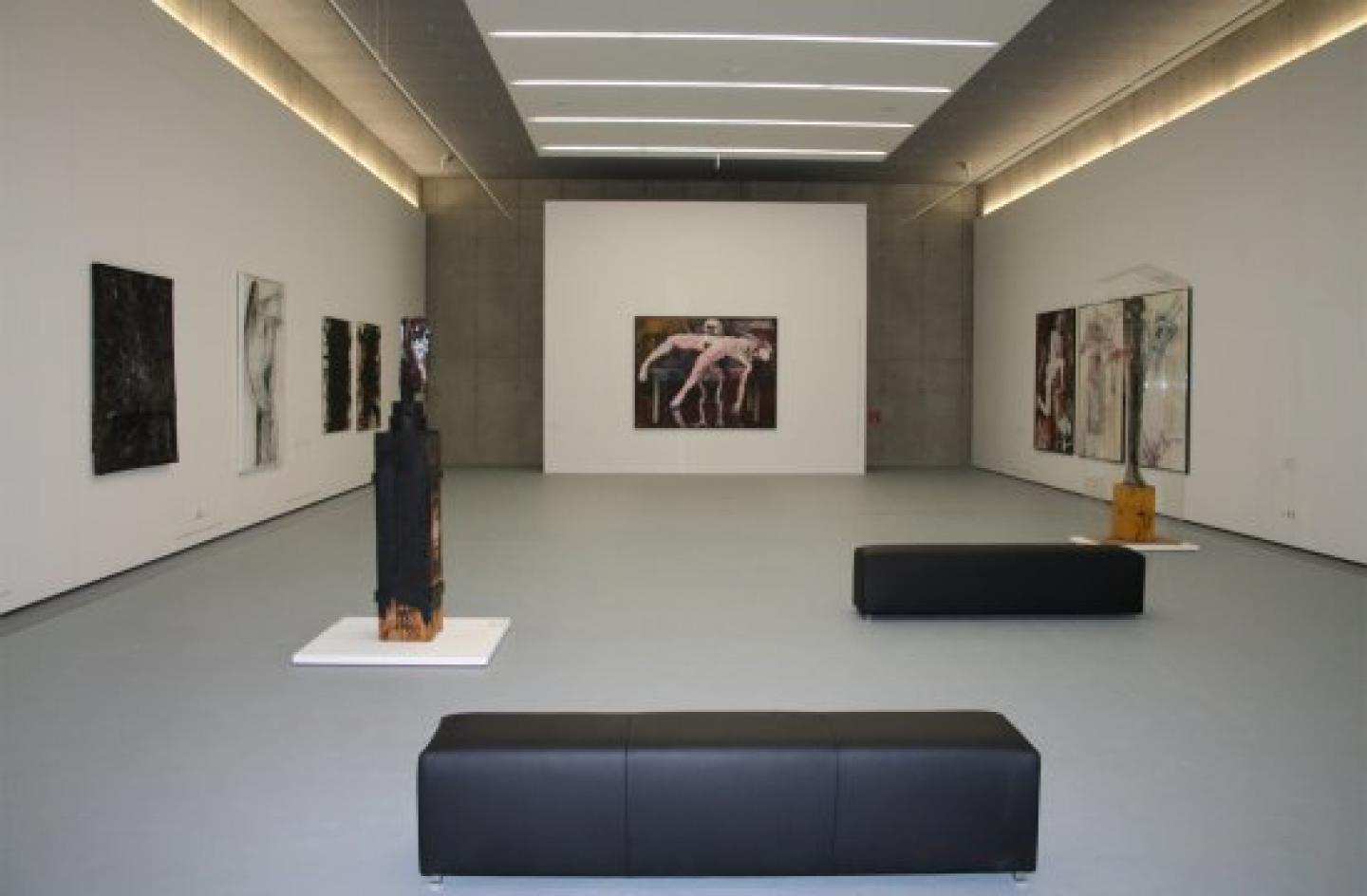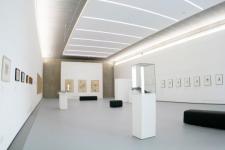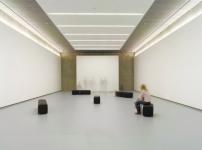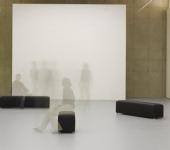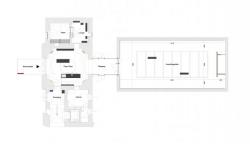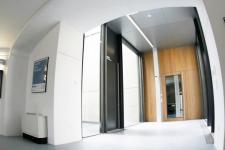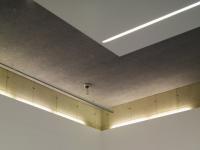A museum should provide insights ? not perspectives. Adolf Frohner
The Forum Frohner is part of the cultural
centre Minoritenplatz in Krems-Stein.
It has its origin already at the Steiner Minoritenplatz. A transparent steel and glass construction opens the entrance hall to the forecourt.
A baroque central room, the lounge, the depot and the exhibition hall are all connected to the entrance hall.
The new building part, the exhibition hall, is situated in the monastery garden
following the entrance hall and axial to the forecourt. A glass corridor connects and contrasts the two construction
units (old monastery and new exhibition hall).
The hall orients itself to contemporary international standards in means of heating, ventilation and air conditioning
and forms a strong but reserved framework for pieces of art.
The used materials refer to the art of Adolf Frohner and to the purist theory of the religious order of the Minoriten.
The walls are implemented in in-situ concrete, whereby following Frohners art ?the beautiful in the ugly one to find? the concrete appears in its rough and moldy look.
A white ?shell? is set in front of the concrete walls to ensure easy mounting
of pieces of art. This shell can be arranged in varying ways and guarantees
a maximum flexibility in setting up different kinds of exhibitions.
In the distance, towards the rear wall, a bouncing wall is realized and offers the most prominent place for hanging paintings in the exhibition hall.
The ceiling is constructed with Heradesign
plates. These assigned plates, normally used in the foundation engineering,
are characterised by their formal
proximity to the early works of Frohner (mattress paintings). Additionally,
they have outstanding sound absorption values.
In the centre of the ceiling an illuminated
ceiling is formed as a ?white cube.? This establishes a formal close relationship to the shells and manufactures
a contrast to the ?raw ?elements of the space like the concrete walls, the mattress ceiling and the floor.
The purist philosophy of the religious order of the Minoriten was translated into an adequate and contemporary architectural language which operates with simple and authentic materials and forms.
The space itself should behave neither self-confidently nor certainly, but naturally.
2007
2007
fritz göbl ZT gmbh & Lukas Göbl
